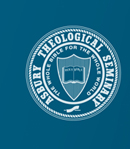Abstract
It is well established that John Wesley’s understanding of faith shifted radically between 1735 and 1740. The nature of that shift is variously understood, but most agree that Wesley shifted from defining faith as assent only to faith as a heartfelt trust; from faith as a bottom-up effort to faith as a top-down gift. What is often overlooked is that Wesley’s new version of faith was influenced by his previous epistemological commitments. Faith, accordingly, is defined in terms of a conscious state, something not deducible by inference but directly available to its subject, and located epistemologically at the forefront of the mind’s tripartite operations.
DOI
10.7252/Journal.02.2023F.06
Recommended Citation
Johnston, Kenny
(2023)
"Faith, Knowledge, and Virtue: John Wesley’s Concept of Faith as a Conscious State,"
The Asbury Journal:
Vol. 78:
No.
2, p. 336–357.
Available at:
https://place.asburyseminary.edu/asburyjournal/vol78/iss2/7
Included in
Biblical Studies Commons, Christian Denominations and Sects Commons, Missions and World Christianity Commons

